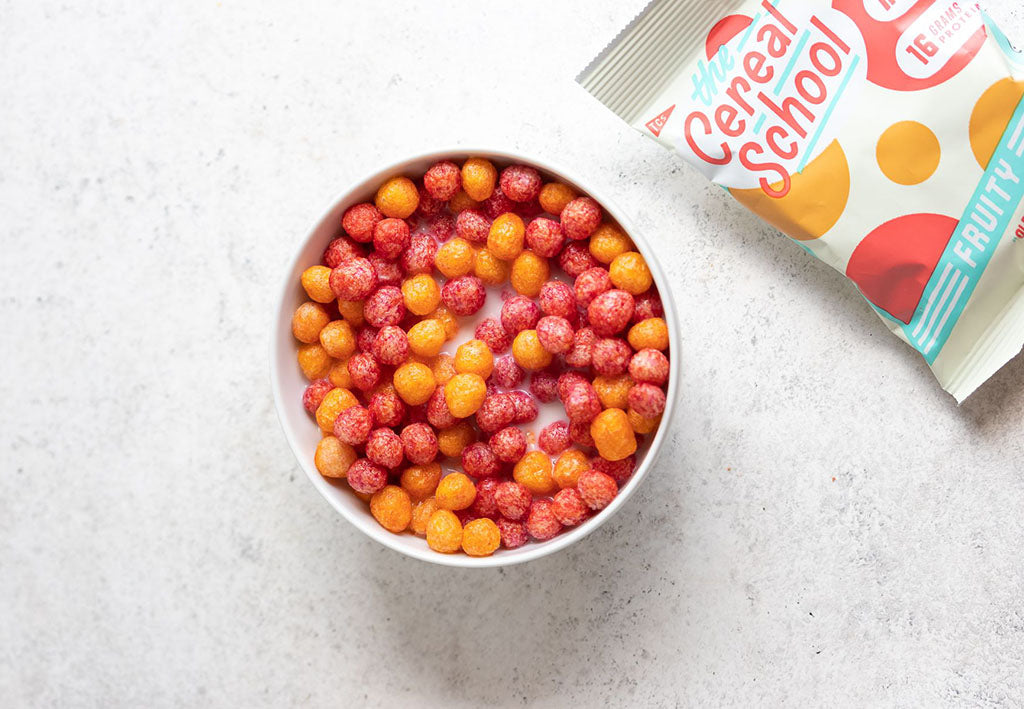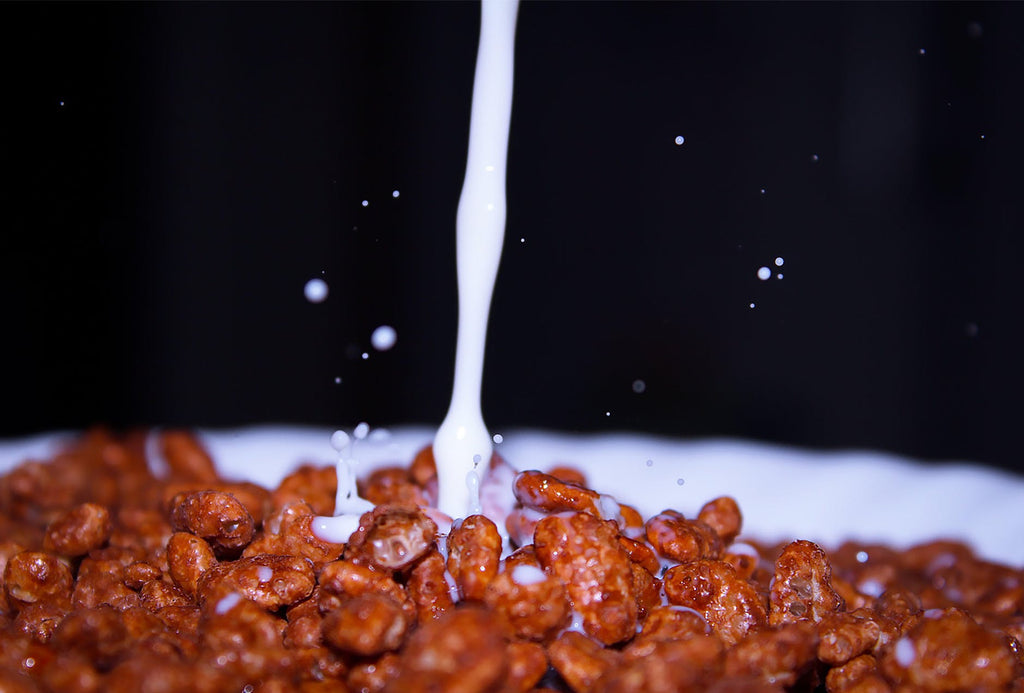
There are plenty of questions in this world with definite answers.
Is Instagram addictive? Yes.
Is it possible to squeeze in just one more episode of “The Crown” on Netflix before you go to bed? Yes.
However, when it comes to the question, "Is cereal bad for you?" the answer is not so clear.
As you’ll read below, there are plenty of reasons why cereal is bad for you. But there are also many ways you can make it good. Let's weigh our options here.
Why Is Cereal Bad for You?

Cereal has gotten a beating in recent times, and it’s no surprise. Here are a few reasons why cereal can be bad for you.
1. There's Too Much Sugar
Most of the time, breakfast cereals contain far more added sugar than what's considered healthy.
The American Heart Association recommends that men should have no more than 36 grams of added sugar (9 teaspoons) per day, while women should not exceed 25 grams (6 teaspoons) per day. Unlike naturally occurring sugars that are in foods like fruit, added sugars are mixed in when preparing or processing food.
But even when you think you’re choosing a healthy cereal, things may not be quite what they seem.
Take Kashi, for example, a brand touted for its healthy whole-grain cereal. Kashi Go original is indeed a high-fiber and high-protein cereal, which can help you feel fuller longer. But the 8 grams of sugar per serving is a not-so-good addition — especially when you learn that consuming too much sugar in the long-term can lead to type 2 diabetes, heart disease, and other serious health problems.
2. There Isn't Enough Protein or Fiber
As mentioned, a high-protein and high-fiber combo are ideal for helping you feel full longer (even though having a snack in between meals isn’t always a bad thing). What’s more, protein and fiber provide other health benefits, such as helping to maintain a healthy weight and lowering your risk of diabetes, heart disease, and some types of cancer.
And so you congratulate yourself for picking up a box of, say, Kellogg’s Special K, which presents itself as a healthy cereal. But upon closer inspection of the nutrition label, you may be surprised to see that along with the 7 grams of protein (not bad), it contains a whopping 39 grams of total carbs and hardly any grams of fiber — just a single gram, to be exact. So much for a healthy breakfast choice.
3. You Get More (Weed Killer) Than You Bargained For
When looking at the ingredient list of cereal, chances are you’re not contemplating how much weed killer you’re willing to accept for your morning meal. After all, when it comes to pesticides and preservatives, less is more. (And none is best.)
The problem is, when you review the Environmental Working Group’s round of tests, you’ll discover that the non-profit organization found the weed killer glyphosate in “in all but two of 45 samples of products made with conventionally grown oats.”
What’s more, almost 75% of those samples “contained levels of glyphosate higher than what EWG scientists consider protective for children’s health with an adequate margin of safety.”
And this isn’t referring to obscure cereal brands. The brands that tested positive for glyphosate are the same ones you’ll find in almost any cereal aisle — and maybe in your pantry.
General Mills Cheerios? Yup.
Nature Valley crunchy granola bars? Yes.
Barbara's Multigrain Spoonfuls? Uh-huh.
Not exactly conducive to healthy eating, is it?
How to Make Cereal Good for You

By now, you may be convinced that cereal is bad for you, but let's not be too hasty here. It's not time to give up your daily bowl of cereal (we can all let out a collective sigh of relief).
Remember, you can't run on empty at the start of the day — not with all the things you've got to tick off your to-do list before 10 a.m. You need all the energy that breakfast can offer, and cereal is a great way to help you start the day right. Not only that, breakfast is arguably the most important meal of the day: It can kick-start your metabolism, improve your concentration, lower your chances of getting heart disease, and so much more.
As lovers of cereals, there's no way we're suggesting a break-up with our favorite breakfast food. Cereal may have a few things going against it, but there are a few things you can do to make it work.
Limit Your Sugar Intake
This one's a no-brainer. Sugar is an empty calorie, so there's no reason to eat anything with added sugar in it. If you must have some sweetness, consider a low-sugar cereal instead (and stay far away from anything that lists sugar as its first ingredient).
Remember: Just because a cereal (or any other packaged food) is labeled sugar-free, it doesn’t mean it’s healthy. Some sugar-free cereals are loaded with artificial sweeteners, which research shows aren’t great for you. Be sure to choose cereal made from natural ingredients with low- or zero-glycemic levels, such as stevia or monk fruit.
Watch Your Portion Size
The thing about cereal is that it’s just so tasty, you often want to go back for more. The amount of sugar per serving on the nutritional labels may not look that bad, but the serving sizes themselves might be absurdly small.
For example, while there’s only 10 grams of sugar in a serving of Kellogg's Frosted Flakes, you'd realistically consume more than 20 grams since you'll most likely have more than a one-cup serving of cereal for breakfast.
Stick to the recommended portion size when pouring yourself a bowl of cereal. Or even better, get something that comes pre-portioned (like single-serving Cereal School packets).
Add Healthy Toppings
If you think a bowl of cereal with milk is pretty boring, jazz it up and sweeten it naturally with some low-glycemic fresh fruit. (You may want to stay away from dried fruit as it typically has high sugar content.) You could also throw in a tablespoon of chia seeds for an extra dose of antioxidants, fiber, iron, and calcium. Chia seeds expand, so they have the added bonus of helping you feel fuller.
Is Cereal Bad for You? Not If You Choose the Cereal School

One of the main reasons we'll never suggest giving up cereal is for the simple reason that it’s oh-so-tasty. The crunchy goodness, the sweetness tantalizing your taste buds, the perfect blend of milk and cereal… you get the picture.
At the same time, cereal’s got your back on those days when you've hit that snooze button one too many times, and you need to make a quick dash out the door. (And who doesn’t love a convenient breakfast on the go?)
So don’t worry — there's no need to say good-bye to cereal. Follow the tips in this guide, and you’ll make much better choices, like the Cereal School.
For starters, it's a sugar-free cereal, which means you don't need to worry about your blood sugar spiking. Our cereal gets its sweetness from our personalities, ahem, we mean monk fruit, Mother Nature's natural sweetener.
Speaking of natural, we use only non-GMO ingredients, with no preservatives. There's nothing artificial about our cereal (those are natural colors you see), and you won't find a trace of weed killer in it either. The Cereal School is gluten-free and grain-free, and doesn't contain any of the common ingredients that are often sprayed with weed killer.
And while there's only one carb gram in our cereal, there are 16 grams of protein for each serving to keep you feeling happy and full without that mid-morning crash.
The answer to the question, "Is cereal bad for you?" is a resounding no when you choose Cereal School. The only problem you'll face is deciding on the flavor: good old cinnamon bun, colorful fruity, decadent cocoa, or sweet-and-salty peanut butter.



